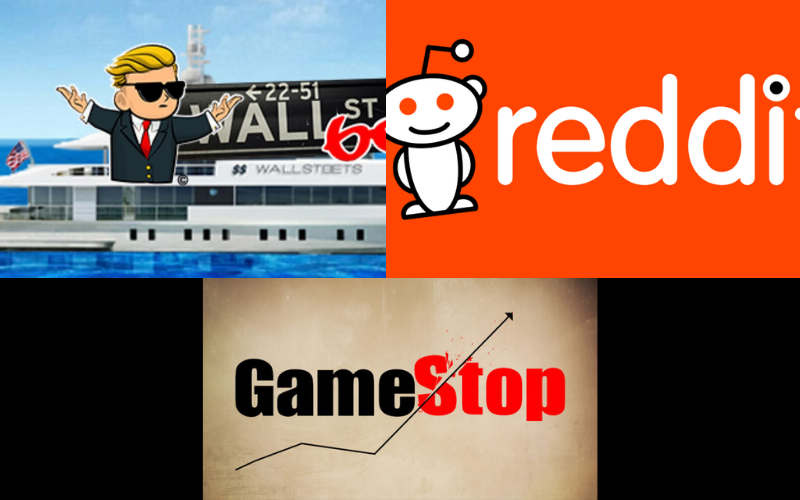- Was it legal?
- How was it possible to sell 140% of GME short?
- Why $3Billion demand from DTCC at 3am?
- Could GME have crashed the market?
- How to prevent synchronized bull attacks in the future?

As all the characters assemble for Congressional hearings on the Gamestop saga here are five questions that lawmakers should consider posing to all the parties involved.
Was this illegal?
Pump and dump schemes in which a manipulator falsely promotes the fundamental value of a stock are clearly illegal as you can not lie about material facts of the company. However, the GameStop saga was very different. First and foremost most of the Reddit posters ran disclaimers that this was not financial advice and even openly referred themselves as “idiots” negating any serious claim that this was promotion based on some fundamental misrepresentation.
The central thesis of the longs was based on market mechanics. They openly argued that #GME was a buy because many hedge funds including Melvin Capital were short and would have to “buy-in” to cover their positions or face potential bankruptcy due to margin calls. A short squeeze is a perfectly legitimate strategy, the difference in the #GME case was the massive scale of cooperation and the high level of sophisticated analysis on the part of some Reddit posters in identifying the short hedge funds who were trapped. It’s difficult to see how this scheme was illegal given the open disclosure of the facts and the fully voluntary actions of all the participants. (No one forced Melvin Capital to hold the short. No one forced Reddit traders to keep buying at $300/share or higher)
How is it possible that 140% of #GME stock was sold short?
At its peak #GME saw more than 140% of the stock outstanding sold short. This is a seemingly impossible idea as speculators were able to sell short a greater amount than the capitalization of the whole company effectively betting that it was worth 40% less than zero. Although it looks illegal there is a plausible explanation for how this can occur.
As @lmgtwit explains,
The result is still naked shorting.
— Mike "Mish" Shedlock (@MishGEA) January 30, 2021
You just described a mechanism as to how it happens. https://t.co/XUsbTk9sub
The much more critical question is whether shares that have already been lent out should be “marked” in some way as to prevent this multiplier effect from swelling the short position in excess of the actual value of the company.
Why was there such a large request for collateral from DTCC to Robinhood?
DTCC, which is the central clearing firm for most financial transactions in the US, demanded a $3 Billion posting of collateral at 3am from RobinHood. According to an interview that Vlad Tenev CEO of RH gave to Elon Musk on the Clubhouse app this was “orders of magnitude larger” that any request prior and Tenev further admitted that he did not know the full reason or the exact formula used in making this calculation – the end result of which was that almost all brokers suspended the right to buy #GME shares on the open market and in effect stopped the short squeeze cold. The more conspiratorially minded Reddit traders have surmised that this was the ultimate market manipulation move that rescued the trapped hedge funds who were short.
Could there have been a market crash if the #GME squeeze was allowed to continue?
Although it’s hard to imagine that a single stock could have such an impact on the broader market, the scope and scale of the trade could have triggered what is known as a margin cascade. The trapped short hedge funds would have had to resort to indiscriminate selling of their long positions in order to meet margin calls. That in turn would have invited other speculators to short stock index futures which would then have forced index funds and other long only mutual funds to liquidate as well causing a potential crash in the stock indices themselves. The Fed, whose balance sheet is already at record highs, would have had to step in once again into the market to provide liquidity and address the panic selling.
How should we deal with synchronized bull attacks in the future?
This is perhaps the hardest question of all as it shows how today’s capital markets are woefully unprepared for our highly networked social media investment environment which allows voluntary coordination of millions of individual actors in moving the price of given security. One critical change that needs to be implemented yesterday is the ability to have instantaneous trade settlement and clearing. The technology exists to instantly settle all trades on US exchanges within seconds of them occurring – a function that would have gone a long way in addressing many of the problems of the #GME saga. The current T+2 system (which relies on credit worthiness of all the counterparties and takes a seemingly endless two days to reconcile accounts) is a relic of the past akin to letting a horse and buggy travel on the interstate highway system.
The #GME battle was one of the most epic events in market history but it may ultimately be remembered as an episode that revealed the true structural weakness of the US financial system that will need to be repaired quickly.





